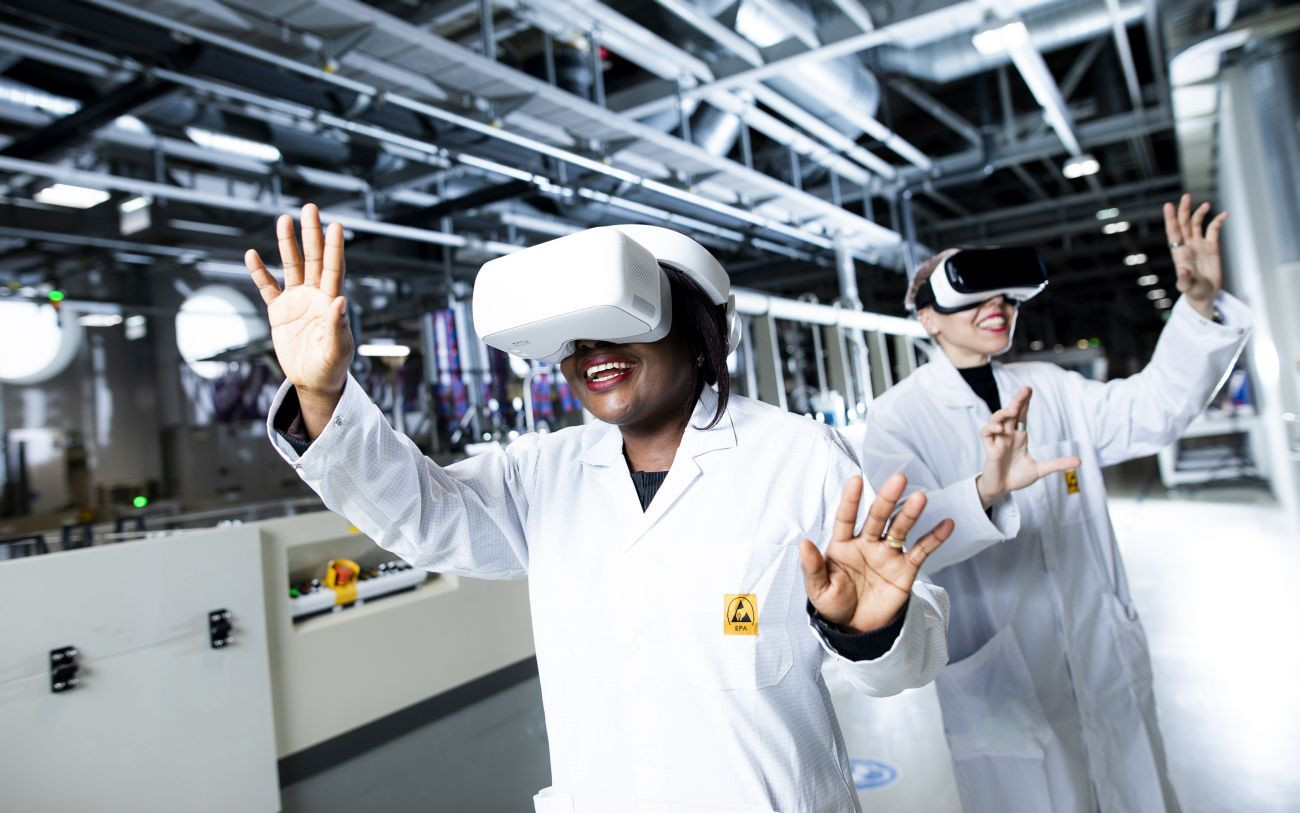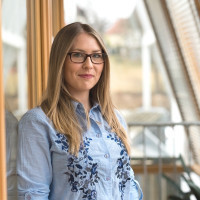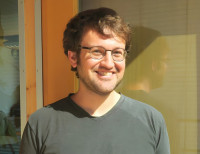Many industrial companies could cover a large part of their heating requirements with renewable energy. However, until now there have been hardly any tools available to design and control the systems in such a way that they achieve maximum emission and cost savings under the respective conditions. The CORES and Digital Energy Twin research projects are now providing models with which companies can not only convert their heat supply systems, but also optimize them during operation.
High electricity and gas prices are hitting industry hard. Many companies and politicians are pinning their hopes on hydrogen and electricity from renewable energies. But both have been in short supply so far. This discussion often overlooks the fact that there are other technologies for generating process heat for industry.
Heat accounts for around three quarters of industrial energy demand worldwide, more than half of it at temperatures of 250 °C or less. This heat could also be generated using solar thermal collectors, combined thermal-electric collectors (PVT) and photovoltaic systems in combination with heat pumps and the integration of waste heat.
Efficiency measures such as heat recovery are also far from being exhausted in all companies. In 2015, a study by the consulting company ICF came to the conclusion that up to ten percent savings could be made in process heat supply with efficiency measures, which would pay for themselves in less than five years even at the very low energy costs at the time.
CORES' project for the optimization of system configurations
Finding the best system configuration for a specific application is still a complex task that cannot be solved satisfactorily using conventional design software. The 'CORES - Integration of Combined Renewable Energy Systems in Industry' project coordinated by AEE INTEC therefore took a new approach. The project partners from Austria have jointly developed and tested digital models to identify the best heating systems for three specific industrial companies. These include the manufacturer of fruit preparations and fruit concentrates Agrana Fruit in Gleisdorf, the Wörle cheese dairy in Salzburger Land and the Lasselsberger tile production plant in Chlumany in the Czech Republic. The central task was to reduce the simulation models to a handful of optimization variables and key performance indicators (KPIs), as an overloaded system becomes slow and unusable for practical use.
 The 'CORES' model from AEE Intec simulates how solar collectors, heat pumps, waste heat and storage can be used to create a customized energy system for an industrial companyThesimulationclearlyshowed how strongly the optimal system depends on energy prices: If the gas price rises, solar thermal energy is particularly interesting for low-cost heat generation. If gas costs are high while the price of electricity remains moderate, this speaks in favor of using a heat pump. And if the price of electricity is also rising, it makes sense to generate the electricity for the heat pump with a PV system. When deciding on a system design, it is therefore necessary to make assumptions about price trends and decide whether minimum costs, reducing emissions or greater independence are more important.
The 'CORES' model from AEE Intec simulates how solar collectors, heat pumps, waste heat and storage can be used to create a customized energy system for an industrial companyThesimulationclearlyshowed how strongly the optimal system depends on energy prices: If the gas price rises, solar thermal energy is particularly interesting for low-cost heat generation. If gas costs are high while the price of electricity remains moderate, this speaks in favor of using a heat pump. And if the price of electricity is also rising, it makes sense to generate the electricity for the heat pump with a PV system. When deciding on a system design, it is therefore necessary to make assumptions about price trends and decide whether minimum costs, reducing emissions or greater independence are more important.
But even after installation, the system can still react within certain limits. To this end, the project partners developed a control strategy to provide the largest possible amount of renewable energy at the lowest possible cost in every market situation and weather condition.
 The potential for solar thermal energy, heat pumps and waste heat recovery in industry is huge: heat accounts for almost three quarters of industrial energy demand worldwide, a good half of which is at temperatures of 250 °C or less
The potential for solar thermal energy, heat pumps and waste heat recovery in industry is huge: heat accounts for almost three quarters of industrial energy demand worldwide, a good half of which is at temperatures of 250 °C or less
Digital Energy Twin: energy model with real data
The ongoing 'Digital Energy Twin (DET)' project goes one step further. The digital energy twin is not only used to plan the energy concept, but is also installed in the company for a longer period of time. Based on data from production, the energy market and the weather, it maps the current or future energy supply. In addition, unlike the 'CORES' model, the digital energy twin can also include the production processes themselves as a variable.
The first company to use the energy twin will be AT&S Austria Technologie & Systemtechnik, a manufacturer of high-end printed circuit boards and IC substrates. The company plans to use digital models of selected production processes and virtual reality for employee training. The immersive display of energy data directly on the machine helps employees to understand energy consumption and potential savings.
AT&S requires energy for electric drives, cooling and heating. Over the years, the supply system has been repeatedly adapted to current requirements. It includes two heating networks with different temperatures, cascading heat utilization and the use of waste heat from compressors and cooling systems.
 The Austrian printed circuit board manufacturer AT&S is already using digital models of its production and virtual reality to train employees. A digital energy twin is soon to be added to reduce emissions and costsIn order tomap this system with an energy twin, the researchers are combining two types of models. The energy supply systems can be represented well with known equations so that they can be represented in physical models. Here, DET builds directly on the models from 'CORES'. However, the behavior of production facilities such as electroplating baths and drilling machines can hardly be described in this way. The partners have therefore used machine learning to develop data-based models that can depict these processes in varying degrees of detail. However, further research is still required here in order to be able to take into account all the influencing variables of these processes depending on the production sequence.
The Austrian printed circuit board manufacturer AT&S is already using digital models of its production and virtual reality to train employees. A digital energy twin is soon to be added to reduce emissions and costsIn order tomap this system with an energy twin, the researchers are combining two types of models. The energy supply systems can be represented well with known equations so that they can be represented in physical models. Here, DET builds directly on the models from 'CORES'. However, the behavior of production facilities such as electroplating baths and drilling machines can hardly be described in this way. The partners have therefore used machine learning to develop data-based models that can depict these processes in varying degrees of detail. However, further research is still required here in order to be able to take into account all the influencing variables of these processes depending on the production sequence.
A major challenge of the digital energy twin is the consistent connection of the individual models and their link to the production data. This is realized via a cloud-capable database that collects all relevant internal and external data and makes it available to the simulation models. The simulation results are also stored there centrally and are available for further analysis or visualization. As in the 'CORES' project, the selection of key KPIs was a central component in the development of the digital energy twin in order to keep databases and models lean and operational.
The energy twin moves into the factory
The majority of the development work will be completed once the models have been finalized and merged into a simulation tool.
The next step is to connect the digital energy twin to the process control system at AT&S. There it will accompany individual production plants and supply systems and help to reduce emissions and costs. Practical experience with its handling will also be gathered: How can the various departments interact with the digital energy twin? How can the knowledge gained in the process be fed back into the models? And how can the best possible data security be guaranteed at the same time? At the end of the project, there should also be answers to these questions.
The result should be a digital energy twin that is standardized to such an extent that it can be adapted to changing situations with little effort. This is urgently needed, because only with planning and optimization processes that are both standardized and adaptable will it be possible to convert industry to alternative energy concepts at the speed required by climate change and the energy crisis.
www.aee-intec.at, ats.net
|
Sarah Meitz is a project collaborator in the Industrial Systems division and in the Water and Process Technologies research group at AEE - Institute for Sustainable Technologies (AEE INTEC) and project manager of 'CORES'. Her research focuses on the decarbonization of industry as well as energy and resource efficiency. |
|
|
Carles Ribas Tugores is a project member of the Cities and Grids division at AEE - Institute for Sustainable Technologies (AEE INTEC). His research focuses on the modelling and optimization of energy systems. |




